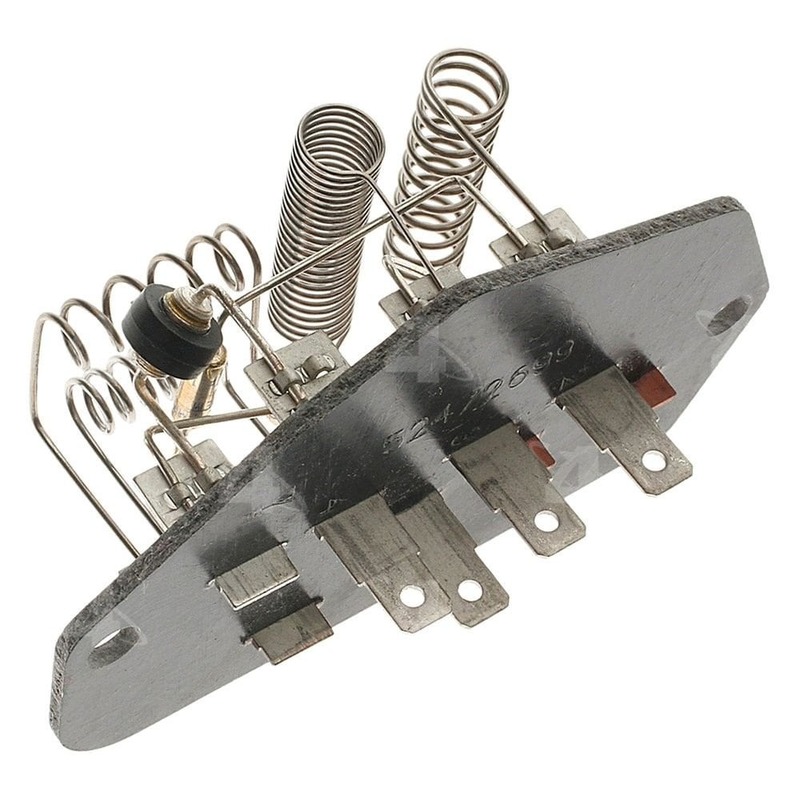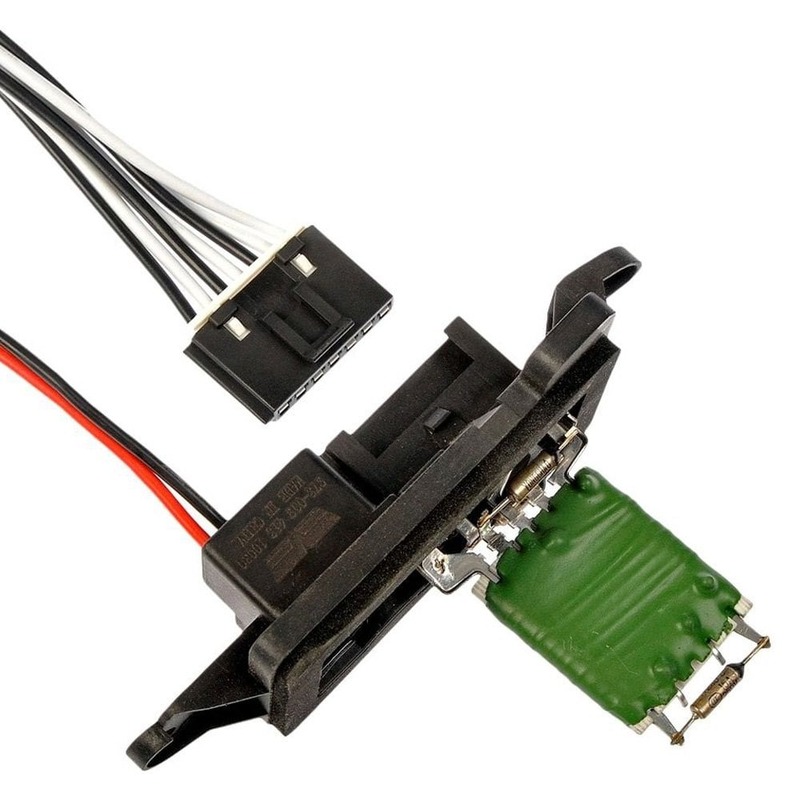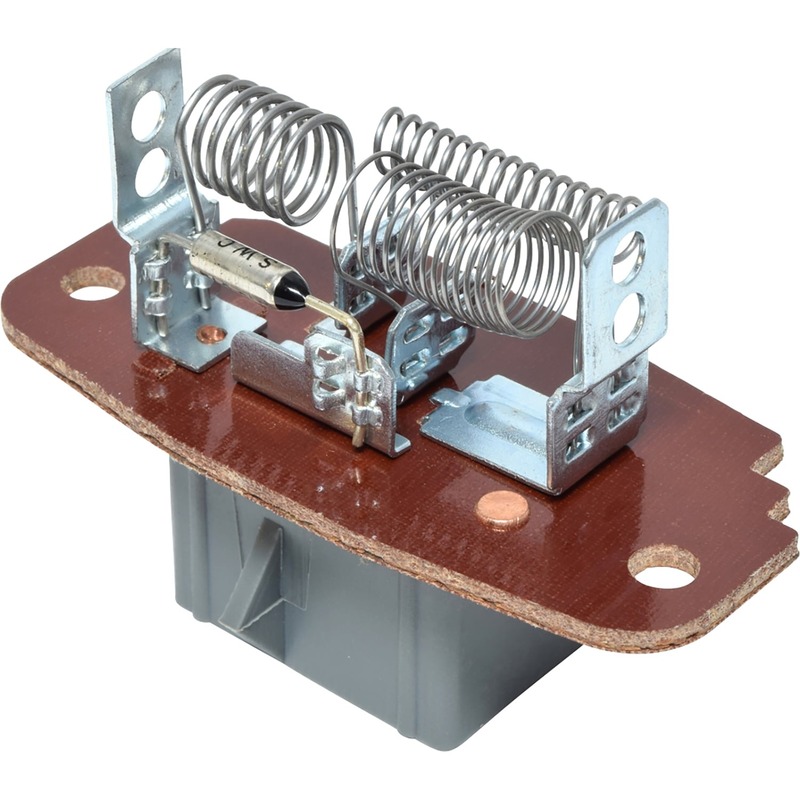What is a Blower Motor Resistor?
The blower motor resistor is a critical component in your vehicle’s heating and air conditioning (HVAC) system. It controls the speed of the blower motor, which delivers airflow into the cabin. If your vehicle is experiencing struggles with fan speed—from only blowing air at high speeds to not blowing air at all—it’s likely due to a faulty blower motor resistor. Understanding this component’s significance is crucial for DIY car enthusiasts, automotive students, and everyday car owners who want to maintain their vehicles effectively.
In this comprehensive guide, we will explore what a blower motor resistor is, its role in your vehicle, and how you can identify, test, and replace it if necessary. We will also look into the costs associated with blower motor resistors and provide suggestions for where to buy them.
Understanding the Role of the Blower Motor Resistor
Functionality
The blower motor resistor regulates the voltage supplied to the blower motor. By controlling the voltage, it adjusts the fan speed settings. The higher the voltage, the faster the fan spins, creating a stronger airflow. Conversely, lower voltages result in slower fan speeds. Proper functionality ensures that passengers can adjust the level of heating or cooling according to their needs.
In most vehicles, the blower motor has several speed settings, ranging from low to high. When you turn the fan speed dial, you are essentially altering the voltage reaching the blower motor. Thus, the blower motor resistor is an indispensable piece of the puzzle for ensuring a comfortable driving experience, especially during extreme weather.
Components on Board
Blower motor resistors come in various designs, with materials that affect their performance and durability. The most common types include:
-
Wire-Wound Resistors: These traditional units use a coiled wire to resist the electrical current. They are simple but can generate heat, which may lead to failures over time.
-
Ceramic Resistors: Often more durable, these resistors utilize ceramic materials to dissipate heat, thus prolonging their lifespan.
-
Solid-State Resistors: These modern components are more efficient, with less heat generation and a higher tolerance for electronic fluctuations.
Choosing the right resistor is crucial for optimal performance, so consider your specific vehicle requirements and the conditions it faces.

Symptoms of a Faulty Blower Motor Resistor
Common Symptoms
A malfunctioning blower motor resistor can manifest through several symptoms. Identifying these early can save you time and money. Here are some common signs:
-
Inconsistent Fan Speeds: You may notice that the blower motor only works on certain speed settings—typically high—while failing on lower speeds. This is often the first sign that the resistor is failing.
-
Complete Fan Failure: If the blower motor stops functioning altogether, the culprit could be the blower motor resistor. It could also indicate a problem with the motor itself, which is why further testing is necessary.
-
Burning Smell: If you detect a burning smell when you use the fan, it’s a sign of overheating components, including the resistor.
Prompt diagnosis is key to preventing further issues with your HVAC system. Ignoring these symptoms can lead to additional repairs that might have been avoided with a timely resistor replacement.
Diagnosis
To confirm a faulty resistor, look for these symptoms and consider the overall performance of your vehicle’s heating and cooling systems. The blower motor resistor can often be tested using a multimeter, which will provide insight into electrical continuity and functionality.

How to Test a Blower Motor Resistor
Testing Process
Testing a blower motor resistor can be done in a few straightforward steps:
-
Safety Precautions: Begin by disconnecting the vehicle’s battery. This prevents any accidental electrical short circuits during testing.
-
Remove the Resistor: Locate the resistor, which is typically found near or attached to the blower motor itself. Depending on your vehicle, it may require removing a panel or some screws for access.
-
Use a Multimeter: Set your multimeter to the resistance setting. Touch the leads to the terminals on the resistor. A properly functioning resistor will display varied resistance levels across its terminals.
-
Check for Variability: Each of the terminals should provide a different reading. Significant uniformity might indicate a failure, prompting a replacement.
By following these steps, you can efficiently determine whether your blower motor resistor is in need of replacement.
Wiring Diagram
A wiring diagram can be incredibly helpful for understanding the electrical paths that involve the resistor. Most vehicle repair manuals include detailed diagrams. Familiarizing yourself with this information can make troubleshooting and installation easier, especially for those new to automotive repair.
Replacing a Blower Motor Resistor
Tools Needed
Before starting the replacement process, gather the following tools:
-
Screwdrivers (both flathead and Phillips)
-
Wrenches or socket set
-
Multimeter (for testing)
-
Safety gloves and goggles
-
Replacement resistor that is compatible with your vehicle
Having the right tools at hand will help the process go smoothly without unnecessary interruptions.
Step-by-Step Instructions
-
Disconnect Battery: Ensure your safety by disconnecting the car battery before you begin working on electrical components.
-
Locate Resistor: Identify the blower motor resistor. It is typically situated beneath the dashboard, near the glove compartment or under a panel.
-
Remove Components: Depending on your make and model, you may need to take off some surrounding components or panels to access the resistor.
-
Unplug the Resistor: Carefully unplug the electrical connector attached to the resistor. Be gentle to avoid damaging any wires.
-
Unfasten the Resistor: Use your screwdriver or socket to remove any mounting screws that hold the resistor in place.
-
Install the New Resistor: Position the new blower motor resistor inside the connector and secure it in place with screws.
-
Reconnect Everything: Plug the electrical connector back in and ensure everything is fastened securely.
-
Reconnect Battery and Test: Finally, reconnect the battery and start your car. Turn on the HVAC system and test the fan speeds to ensure proper functionality.
Following these steps will allow you to replace the blower motor resistor efficiently and effectively.

Cost and Where to Buy
Cost Overview
The cost of a blower motor resistor can vary widely depending on factors such as brand, vehicle compatibility, and materials used. On average, you can expect to spend between $15 to $100 for a replacement part. Labor costs for professional installation can range from $50 to $150, depending on local labor rates and shop fees.
If you’re considering a high-end or OEM (Original Equipment Manufacturer) replacement, prices may rise significantly, especially for luxury vehicles. However, many affordable aftermarket options offer great reliability at a lower cost.
Where to Purchase
When it comes to purchasing a blower motor resistor, you have options:
-
Online Retailers: Websites like Amazon, eBay, and specialized auto parts retailers like RockAuto and AutoZone often stock a variety of blowers and other automotive components.
-
Local Auto Parts Stores: Stores like O’Reilly Auto Parts or NAPA Auto Parts are great sources for immediate purchases and allow you to examine the product first.
-
Authorized Dealerships: If your vehicle requires specific parts, a dealer may be the best place to find OEM components, albeit at a higher cost.
Remember to ensure compatibility with your specific vehicle make and model to avoid purchasing the wrong component.
Conclusion: Keep Your Vehicle’s Climate Control Operating Smoothly
A properly functioning blower motor resistor is vital for ensuring that your vehicle’s climate control system operates effectively. It helps maintain a comfortable environment for you and your passengers, regardless of external temperatures.
By regularly checking for signs of a malfunctioning resistor and conducting timely replacements, you can prevent more severe issues down the road. This approach not only enhances your driving comfort but can also save you significant repair costs in the long run.
We encourage our readers to share their experiences with blower motor resistors or ask any questions they may have in the comments section. Engaging with this community will help everyone learn from each other’s experiences and make informed decisions regarding automotive maintenance.
By following the advice in this guide, you can ensure that your vehicle remains a reliable and comfortable mode of transportation for years to come.










